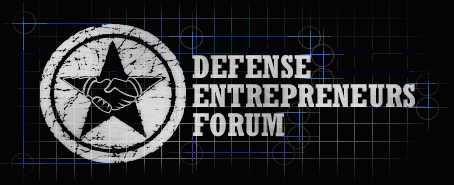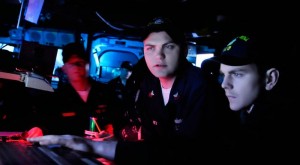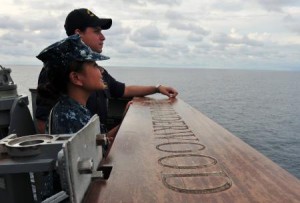 One year ago today, an oft repeated, maligned and admired phrase kicked off a broad dialogue, bringing together a growing, widespread, and once-disparate community of defense innovators. Put simply, the idea of Disruptive Thinking was a call to question the status quo, to leverage existing innovative civilian institutions and to find crossover applications for use by the military. In the year since, however, a necessary question has been asked many times: What is Disruptive Thinking, really, and how do you put it into action? How do we link creative, emerging military leaders with the senior decision makers that can actually put their ideas to use?
One year ago today, an oft repeated, maligned and admired phrase kicked off a broad dialogue, bringing together a growing, widespread, and once-disparate community of defense innovators. Put simply, the idea of Disruptive Thinking was a call to question the status quo, to leverage existing innovative civilian institutions and to find crossover applications for use by the military. In the year since, however, a necessary question has been asked many times: What is Disruptive Thinking, really, and how do you put it into action? How do we link creative, emerging military leaders with the senior decision makers that can actually put their ideas to use?
We believe a compelling answer is the Defense Entrepreneurs Forum. Rank has no monopoly on innovative solutions, and DEF2013 will be the engine to match warfighters “in the arena” with senior mentors hungry for ideas generated by creative, emerging leaders. This three day event, to be held at the University of Chicago’s Booth School of Business over Columbus Day Weekend 2013, will be a significant departure from conventional military conferences.
The Forum
DEF2013 is not associated with any traditional Defense entities, but instead produced of, by, and for emerging military leaders. The only agenda is creating practical solutions to enable more flexibility for senior commanders, and to impart a sense of involvement and empowerment to warfighters brimming with valuable tactical and strategic contributions. It leverages the power of diverse, short presentations with the creative ideation of hack-a-thon weekend events. These aspects are designed to tackle those issues most pressing to the current generation of military leaders and veterans.
There are two main elements to the weekend: The first consists of 20-30 minute talks by emerging military leaders, both officer and enlisted, with robust audience engagement. The Saturday morning session will feature a variety of topics presented by a diverse crowd of Disruptive Thinkers. Sunday’s morning session will showcase military entrepreneurs – both veteran and currently serving servicemembers – as they explore the connection between building an actual business and serving one’s country.
The meat of DEF2013, however, is in the hack-a-thon like afternoons. Ideas, generated pre-conference by actual attendees, will be discussed at length, and solutions proposed in a collaborative, freeform way. To support these breakouts, professors from the University of Chicago’s Booth School of Business will give two roundtables on marketing and sales, as well as be placed as mentors within the ideation groups. At the end of the weekend, each of the self-assembled teams will have come up with a comprehensive, relevant solution to whatever military problem they set out to tackle.
Integral to this is the engagement of senior leaders. Coming up with good ideas by emerging leaders is one thing – but guiding them through institutional inertia to reality, and providing mentorship to ensure they are implemented, is something uniquely suited to tested leadership. We are recruiting current and recently retired senior mentors to come on board to hear out, and perhaps champion, the ideas generated from the deckplates. Such great minds as LTG (ret) James Dubik and LTG Frederick “Ben” Hodges have already joined up, and we’re working to bring two to three more flag officers from each service.
Finally, Monday morning will culminate with a venture capital-like panel of local, Chicago-based entrepreneurs and Flag Officers. They will judge the best idea, solution and presentation, and in return for identifying the best solutions, engage on behalf of the winning team to get their project implemented.
The Reason
Why do we believe this is needed? What value does this add to the already ongoing discussion?
More than ever, recent battle-tested leaders, both emerging and senior, have had to adapt under incredibly challenging and unforeseen circumstances. Capturing their agile minds and putting them to use in solving current fiscal and strategic problems is necessary for the continued progression of our services. Without a doubt, the current century will become more complex as technology evolves, unforeseen threats emerge, and fiscal constraints set in. More importantly, we need to create a dialogue that elevates the professionalism and creative capabilities of our services as a whole.
Those of us writing today believe the next step in the evolution of Disruptive Thinking is not just through increased online interaction or relying upon status quo bureaucratic processes. Rather, it will be accomplished by bringing the most agile and innovative minds from across the military together in one place for a lively exchange of ideas and solutions. This is the heart of the Defense Entrepreneurs Forum.
The Spark
While the original article on Disruptive Thinking was focused on leveraging education, we recognize that warfighting must always come first in any conversation about innovation and the military. This is inimically tied to the fact that people, not tech, are our greatest assets.
Immediately after the publication of the aforementioned article, members of what are now the DEF Board observed incredibly informative and coherent arguments related to military strategy and innovation over social media. Through many conversations via Twitter and Facebook, it became apparent that disparate networks of individuals, spanning all ranks and services, were effectively fleshing out the most pressing issues of the day in non-traditional ways.
It also became apparent that innovators have inherent ways of finding each other. As their distributed networks grow, cross-cultural (and cross-rank) engagement increases. Though they never meet, some even become close friends. There is a unique power in informal networks created by personal interactions, even if they begin in cyberspace.
Yet something was missing in this process. That element was the intangible benefit of seeing your intellectual sparring partner face to face. The discussions on Twitter, Facebook and various national security forums for emerging military leaders needed to come out of the virtual world and into the physical one.
While discussing this power of networking and the need for an in-person forum to build the relationships required to effect change, the Defense Entrepreneurs Forum was born.
Soon after inception, our personal networks pointed us towards the University of Chicago’s Booth School of Business, where they not only found a world class institution, but a strong veterans group. Leveraging the military experience and entrepreneurial education of recent veterans who are still engaged in national defense dialogue was a perfect fit.
Subsequently, the Executive Board was recruited and, quite inadvertently, spanned the armed services. Many were asked to join based on their disruptive writings – others because they were known practitioners of innovation. All are focused on creating a compelling experience that will unite, excite and build relational networks that will span careers.
The Call
And so, on Columbus Day weekend 2013, Saturday October 12th through Monday October 14th, we encourage the brightest and most creative emerging and senior military leaders to descend upon the Windy City. While there, we will discuss ways to push forward innovative and disruptive ideas, while doing so alongside senior mentors willing to consider our proposals.
We’ve lined up a great cast of speakers and professors to push this event forward. What we still need is you – your intellectual capital and your time – to engage with fellow innovators. We need both senior and emerging leaders to participate.
DEF2013 will be more than a conference to mingle and hand out business cards; it will be a unique opportunity to interact and connect with fellow military and veteran entrepreneurs to push your ideas forward. Sign up today at DEF2013.com, follow us on Facebook, and become a part of putting Disruptive Thinking into action.




